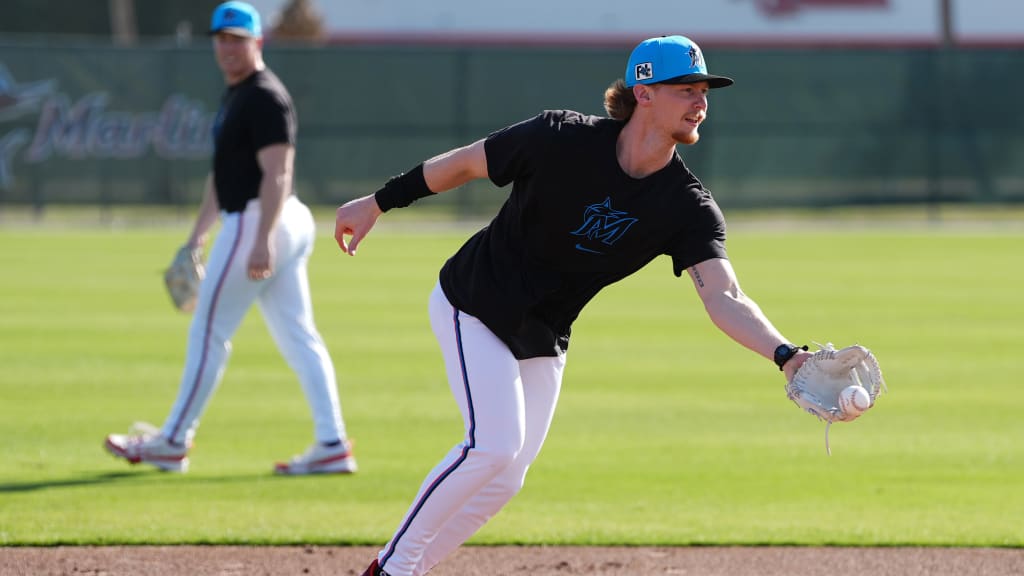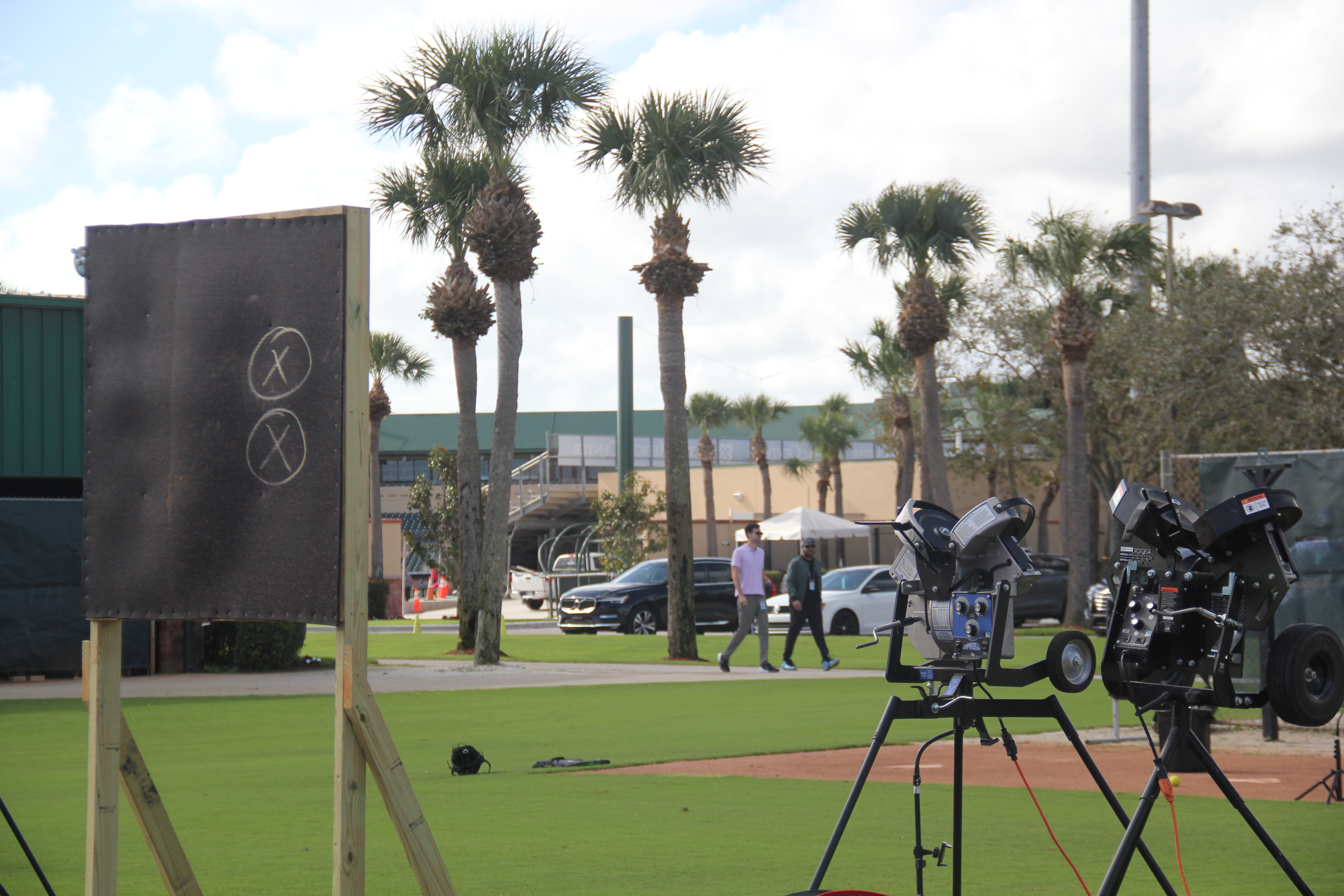
This story was excerpted from Christina De Nicola’s Marlins Beat newsletter. To read the full newsletter, click here. And subscribe to get it regularly in your inbox.
JUPITER, Fla. -- The last time a lefty took the field at shortstop in a Major League game was in 1954.
If you visited the back fields at the Roger Dean Chevrolet Stadium complex this spring, you would find it to be a common occurrence.
Through the first few days of camp, the Marlins have exhibited unorthodox practices to prepare for the season. During pitchers’ fielding practice, for example, everyone from southpaw Ryan Weathers to rehabbing Eury Pérez went deep in the hole for a ball or toward the second-base bag for a flip.
“We've got multiple stations where we're just kind of not being a pitcher for just a couple drills,” Weathers said. “It's fun. I haven't gotten to take ground balls at shortstop since I was like 10 years old. It almost makes you feel like a little kid again. You get to do picks, you're in spots that you're never at traditionally.
“It's fun, because they tell you, 'Just go be an athlete.' Truly, as pitchers, we don't get to be athletes very often, because we're just throwing constantly. It's fun to do something different on a baseball field.”
Miami’s unconventional approach doesn’t end there.
Instead of traditional side sessions on the “six pack” mounds for Wednesday’s first workout, ace Sandy Alcantara threw from the game mound with batters in the box taking hacks. So did every other healthy arm at camp.
The Marlins’ lower-level affiliates tested it out under the new player development staff last season to positive results. Outside of Weathers, who had done something similar during his time at Triple-A in the Padres’ organization, nearly all of his teammates saw this as a novelty.
“I feel like it can be beneficial to everyone,” Max Meyer said. “I know a lot of guys are as competitive as [me and Sandy], and it's going to be hard for everyone to keep it back a little bit. Some people are probably going to get a little tired from this. Some people won't, but it's definitely a learning process, so I'm looking forward to it.”
Much like a regular bullpen session, the pitchers were working on a particular pitch or locating to a specific quadrant of the zone. With the pitching coach trio of Daniel Moskos, Alon Leichman and Brandon Mann standing behind a screen with equipment, the pitcher could receive data on anything from pitch shapes to velocity after each offering.
“We’ve seen throughout the industry how important tech has become, how familiar so many players have become with using tech, and to have that instant feedback in a practice bullpen setting, that's what that's about,” manager Clayton McCullough said. “And then to get some coaching, be able to bounce things back and forth in real time, and then to try to make adjustments, has been great.”
This type of identity is what president of baseball operations Peter Bendix envisioned from Day 1 on the job.
“It's important for us to be innovative,” Bendix said. “That's something that we have to be [is] innovative, or else we are not going to be able to catch up to other teams. Our live sides is an innovative thing that I think makes a ton of sense. I think it will help our pitchers get better. I think will help our hitters get better. It's different. It might not work, but we're willing to try something that we think is different, that we think is going to help and see how it goes. Because we have to be innovative in order to catch up to the rest of the league.”

Other changes include putting plyo walls near the six pack bullpen area so pitchers have a reliable place to throw at a target during prep. Director of pitching Bill Hezel and Moskos teased that more could be on the way. Changing a culture means starting with a foundation and continually updating.
“We spent a lot of time in the offseason as a group trying to think about, 'How can we practice better? How can we train better? How can we make it more like a game?'” Hezel said. “In baseball, there's a lot of things like bullpens and catch play. There's a lot of these things that you obviously have to do to get prepared to play, but they haven't really changed in quite a while.
“And so we just tried to spend a lot of time thinking like, 'OK, what would a better version of these things potentially look like? And if we make them that better version, do we think it helps the players develop faster, more efficiently, all of those things?'”
